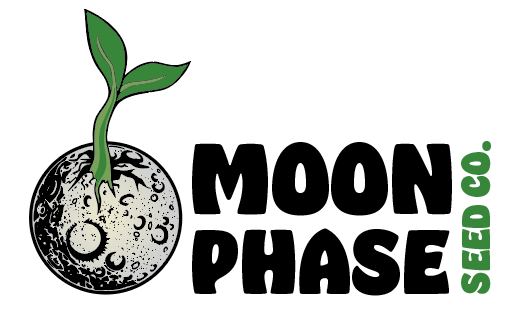Moon Phase Gardening 101:
What is “Moon Phase Planting” and why should you try it in your garden this season? Read on!
Moon Phase Gardening refers to the ancient tradition of starting seeds, transplanting, pruning, or leaving the garden based on the 4 phases of the moon. According to many gardeners around the world, planting different types of seeds during different moon phases can contribute to having an average vs. bumper crop in their experience. They believe plants grow more vigorously and yield more heavily when planted during the appropriate moon phase, such as root crops like beets and carrots during _______.
Elementary School Science Lesson Recap:
Waxing moon:
Waning moon:
Moon Phases:
New Moon:
First Quarter:
Full Moon:
Third Quarter:
(BEST TIMES FOR PLANTING, PRUNING, FEEDING, ETC)
Phase: Plants that produce external fruits that contain seeds inside the fruit such as tomatoes, peppers, squash, okra, . Plant during waxing moon as moonlight gets stronger. Plant/start between new moon and full moon, ideally around the first quarter (1 week after the new moon, 1 week before the full moon)
Phase: Plants that produce underground bulbs or roots like carrots, beets, radishes, turnips, . Root crops prefer to be planted during
Phase:
Theories include more water is pulled into the ground, gravitational pull, also moonlight may play a role.
Some academic researchers have aimed to disprove this practice (link).
While they may not be academic peer-reviewed proof that moon phase planting works, it is hard to argue with thousands of gardeners worldwide who have been doing it for generations. This include in less developed countries where people do not have the time, energy, or resources to do things that are not purposeful and practical. Maybe we have a thing or two to learn from these cultures/practices. (FIND EXAMPLES WORLDWIDE). It is important for us to trust our experiences, and not just what an article that may have bias or an agenda says. Moon Phase Gardening is a great way to practice “experiential learning” both for adults and children. Try for yourself, what do you have to lose? Keep track, write notes in a gardening journal, compare, make a game and experiment out of it with your kids, and decide for yourself based off your experience if you believe this practice has merit or not. The beautiful thing about experiential learning is that you can speak from a place of expertise (kind of) after having tried yourself. We would love to hear feedback and facilitate a discuss about individuals’ experiences with Moon Phase Planting!
How to interpret label
Link to Seed Store
Link to Blog

